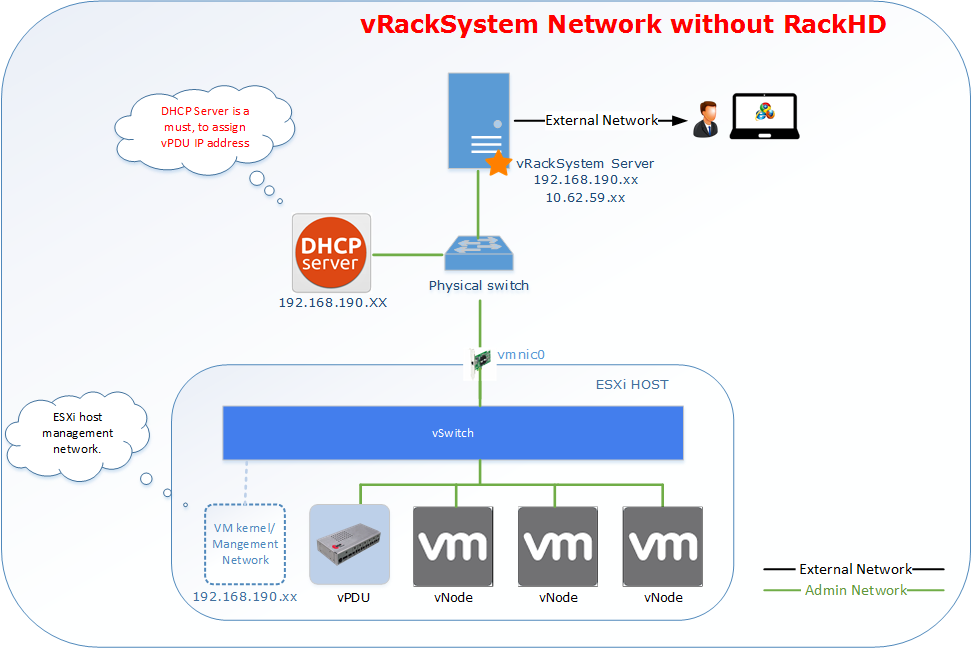vRackSystem is a tool to easily build a virtual Rack. Please follow below document to setup the vracksystem server.
- Deploy the virtual nodes(vNode and vPDU) built by InfraSIM.
- Manage ESXi resources.
- Mapping vPDU and vNode.
- More features are comming...
Note:
- InfraSIM is an open source project and it simulates the interfaces/behaviors of hardware devices a virtual environment. More information can be got from InfraSIM Document.
- vRackSystem server must be an Linux Server with ssh installed and ssh public key generated.
- vRackSystem server must have connection with all the ESXi host that need to be managed.
- vRackSystem server should have an external network. So it can be accessed by external PC.
- RackHD can also be setup in the environment to control vNode and vPDU.
Note:
- RackHD is an open source project that provides hardware orchestration and management through APIs. More information can be got from RackHD Document.
sudo apt-get install python
sudo apt-get install python-pip
sudo apt-get install python-dev
sudo apt-get install python-setuptools
Check whether python was successfully installed and the version is correct.
python --version
- Download VMWare OVF bundle (4.1.0 version, for Linux). Then put the bundle file to the vracksystem server.
- Install the OVF tool
sudo bash VMware-ovftool-4.1.0-2459827-lin.x86_64.bundle
sudo apt-get install mysql-server
sudo apt-get install python-mysqldb
- Get the exiting databases file(vracksystem.sql) from vRackSystem project directory.
- Enter mysql by below command.
mysql -u <your mysql account> -p
- Input your mysql password.
- Import the databases files.
source /path/to/vracksystem.sql
cd vracksystem
sudo chmod -R 755 ova/
cd vracksystem
sudo pip install -r requirements.txt
Change the username and password to align with your own account information in the /vracksystem/AutodeployUI/settings.py.
DATABASES = {
'default': {
'ENGINE': 'django.db.backends.mysql',
'NAME': 'AutoDeployUI',
'USER': '<your mysql account>',
'PASSWORD': '<your mysql password>',
'HOST':'localhost',
}
}
Put your OVA images(vNode and vPDU images) to /vracksystem/ova/.
cd vracksystem
python manage.py runserver 0.0.0.0:<port>
Access vRackSystem by https://<vracksystem server IP>:<port>/ on your external PC.

